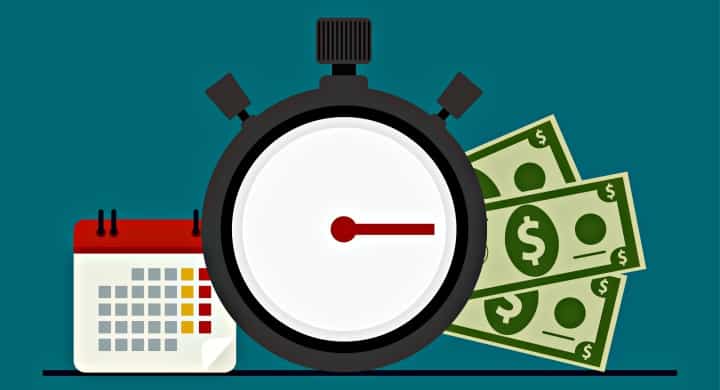Should I Pay My Auto Insurance Policy Monthly or Annually?

Should you pay your auto insurance all up front, or should you pay your premium in installments? Really, the answer is, “it depends.”
The question of how frequently you should pay your premium does not have a straightforward answer, and those answers depend on factors ranging from what financial planners call the “time-value of money” to basic cash flow.
Most people pay bills monthly — so paying insurance monthly might make good logical sense. But insurance contracts are written on an annual or semiannual basis, and many companies will give you a discount if you pay it all up front. Or, conversely, they add a fee on your payments if you pay in installments which will affect your average car insurance rates.
But, is the savings you would get when you plunk down the entire year’s premium worth it? Again, it depends, says Gordon Achtermann, principal for the Falls Church, Virginia-based financial planning firm Your Best Path Financial Planning.
“First, ask yourself if there is a good reason not to commit to having the insurance for a whole year,” Achtermann says.
He said that if the risk is going away after a short time, then it might make sense to make monthly payments, rather than the entire year’s premium.
Then again, even if you did make an annual premium payment toward insuring a car that you ended up selling, you would get a refund for the unused portion of the insurance.
Next, he said you should determine if there is a discount for paying up front.
“If not, then just pay monthly for sure. But 99 percent of the time there will be a discount of maybe 5 percent or so,” Achtermann says.
Assuming there is a discount, he suggests you go through a very basic decision tree.
Step 1: Is your cash flow so limited that you can’t pay the six-month premium right away?
“If yes, then pay the monthly amount,” Achtermann says.
But, if not and you could potentially swing six-months of premium in one payment go, to number 2.
Step 2: Ask if your cash flow is so limited that you can’t pay the full annual premium, or would the full annual premium reduce your cash reserve below where it needs to be?
Again, if yes, then pay the semi-annual amount, but If no, then you have adequate reserves to pay in advance and get the maximum discount.
One way to think of an annual payment is that you are making a loan to the insurance company. You give them the money up front, and they give you a little insurance each month in return.
The answer to this question depends on whether you have the funds to pay a full year or if it’s more budget smart to pay monthly. You have the potential to cash in on a discount if you pay your auto policy for 12 months all at once; however, it also can be a large expense all at once that you could pay monthly instead at regular cost. So it depends on your personal preference as to what is the best option for car insurance payments.
Why Does it Cost More for Monthly vs Annual Insurance Payments?

On the other hand, if your insurance company has to collect payments, they are facing risks and costs to do that, so they are going to charge you a little more for the convenience of monthly payments vs annual payments from their customers.
That dichotomy is the idea of what financial planners call the time vs. value of money. That is the idea that having money today is better than having the same amount in some future time. Or, said another way, money is worth a little less in the future than it is now. You can think of that as the influence of inflation, or the inability to do with that money exactly what you want, when you want to.
But how much, exactly, are you sacrificing by paying it all up front?
Luckily, there are calculators for that.
Say, for example, your annual premium was $1,000. Let’s also say that your insurer will charge you a $4 per transaction fee for making automatic direct electronic installments rather than paying in full.
If you paid monthly, you would pay 12 fees totaling $48, or by paying it semiannually, you would pay two fees, totaling $8. But what does that mean?
According to the Insurance Forum’s calculator, those fees translate into a 3.2 percent APR for the semiannual payments, and a 10.4 percent APR for the monthly payments.
Depending on your financial situation, avoiding that interest rate may make sense, but if you have to put the annual payment on a credit card that charges you 21 percent APR, then it might not make financial sense to pay that lump sum.
Now, if there are other costs or fees involved in delaying your payment, then obviously those would change the math. You also have to calculate in the possibility that you miss a payment and incur a late fee or penalty.
But deciding whether to pay monthly or all at once should be done with some thought and a lot of information, our licensed insurance agents can help you choose the best insurance policy for your needs.
